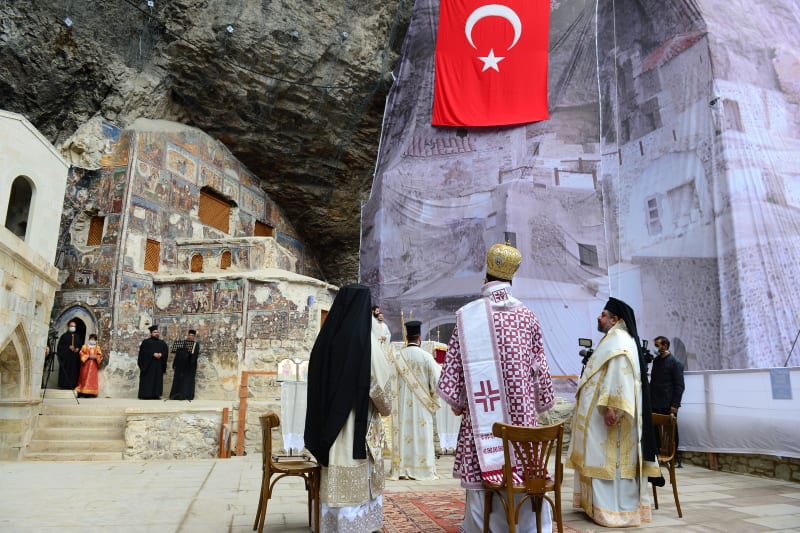Following a nearly five-year restoration project, an ancient Orthodox monastery in Turkey’s Black Sea region has restarted mass services.
Participants went to Sumela Monastery in the Trabzon region Saturday for a ceremony marking the Assumption of the Virgin Mary. About 70 people took part while also observing measures against the coronavirus pandemic.
Christian Berger, the outgoing head of the EU Delegation to Turkey, was among the participants.
Restoration
Due to the risk of falling rocks in the monastery carved into the Pontic Mountains over 1,600 years ago, the site was closed to visitors in September 2015.
The first phase of environmental planning, as well as fortification efforts and geological and geotechnical research, was done on the surrounding rocks, with one part of the monastery, including its yard, opened to visits in May 2019.
After completing the second phase of restoration, 65% of the monastery was opened this July 28 with a ceremony attended by President Recep Tayyip Erdogan via video link and Culture and Tourism Minister Mehmet Nuri Ersoy in person.
“Our Orthodox citizens will be able to perform the [Litany of the Blessed] Virgin Mary religious service, which was suspended during the restoration period at Sumela Monastery,” Erdogan told the ceremony.
In a phone call, Bartholomew, the Fener Greek patriarch based in Istanbul, expressed his gratitude to Erdogan for his support and interest in restoring the monastery, now on UNESCO’s World Heritage Temporary List.
Mountainous monastery
Sumela Monastery, located 300 meters (985 feet) above the forests that cover Altindere Valley in the northeastern province of Trabzon, is known locally as Meryem Ana or Virgin Mary.
Most parts of the monastery were renovated in the 18th century, and some walls were adorned with frescoes. The addition of large buildings in the 19th century brought the structure of its modern form.
Major sections of the monastery include the main stone church, chapels, kitchen, teaching rooms, guest rooms, library, and holy spring.
A large aqueduct can be seen at the entrance of the monastery on a cliffside.
The church sits in front of a vast cavern in the side of Mt. Karadag, which also houses various other monastery buildings.
Frescoes in the chapel date back to the beginning of the 18th century, with three layers done in three different eras. The lowest-layer frescoes are of the highest quality.
The frescoes, some of which were removed or damaged over time, depict biblical scenes from the lives of Jesus and the Virgin Mary.

